From the October 2019 issue of Car and Driver.
On its face, this grouping could be mistaken for an ordinary of-the- moment comparison test: four purposeful sports cars, each costing around $60,000 and capable of hitting 60 mph in roughly four seconds, all laser-focused on driving gratification. We'll admit that's how this story initially came together. But our understanding of, and appreciation for, these machines swelled over three days of hustling them on spastic mountain roads. Even under the aura cast by 1500-year-old, 200-foot-tall sequoias, these four sports cars are timeless giants.
The examples collected here represent some of their makers' best work, both in the past and today. BMW's M2 Competition is the closest thing we have to a spiritual successor of the iconic E30-generation M3. The Ford Mustang Shelby GT350 wears a 53-year-old name yet remains the zenith of the muscle car by delivering as much grip and grace as grunt. Porsche's mid-engined Cayman turns 13 this year but has already inked its place in the history books as one of the 21st century's purest driver's cars. The Toyota Supra, new for 2020 after a 17-year nap, conjures up memories of an era when Japan could build a sports car as swift and serious as anyone else's. These cars are a part of Car and Driver's past, too. Together they have earned 18 10Best awards.
Their names might have long histories, but the sports cars here are the vanguard of modern performance. BMW's M2 earned the Competition suffix earlier this year when Munich revamped the car and added a 405-hp twin-turbo inline-six that bumped output by 40 horses. The Bavarians also retuned the steering and the electronically controlled limited-slip differential. Our $64,145 test car came with the standard six-speed manual, a spray of Sunset Orange metallic paint ($550), the Executive package of niceties such as a heated steering wheel and a Wi-Fi hotspot ($1200), and the M Driver's package ($2500), which boosts the claimed top speed from 155 to 174 mph and includes a day of driving school.
Ford's changes to the 2019 Mustang Shelby GT350 may sound minor, but the impact is tangible from behind the wheel. If the newly standard Michelin Pilot Sport Cup 2 tires were any stickier, 3M could spin tape from them. Recalibrated steering and a retuned suspension reduce the Stang's tendency to follow grooves in the road but don't compromise handling. The flat-plane-crank 5.2-liter V-8 is unchanged and makes 526 raucous horsepower. It's exclusively paired to a six-speed manual, which is just fine by us. The Shelby's $64,860 price included $475 for the vinyl stripes; $2000 for blind-spot monitoring, navigation, and a Bang & Olufsen stereo system; plus the $850 Handling package, which adds a Gurney flap on the rear spoiler for more downforce and adjustable camber plates on top of the front struts.
The Porsche 718 Cayman's $56,350 base was the second-lowest starting price here, but add-ons made it the test's most expensive car, at $72,600. Big-ticket items included the seven-speed dual-clutch automatic ($3210) that replaces the excellent manual six-speed transmission, adaptive dampers ($1790), sport seats ($700), navigation ($1780), 19-inch wheels ($1590), and the Sport Chrono package ($2610). With a turbocharged 2.0-liter flat-four, the Porsche packs a smaller engine than the others, but the Cayman is lighter than they are and keeps up despite its lowest-in-test 300 horsepower.
We wouldn't blame you if you're a bit confused about the styling or the mechanical bits of the Supra. This new one is engineered by BMW and built by supplier Magna Steyr in Austria, while Toyota owns responsibility for its, uh, thought-provoking styling and the final tuning. All Supras are propelled by a 335-hp turbocharged inline-six made by BMW, an eight-speed automatic, and a limited-slip differential. They ride on adaptive dampers and start at $50,945. Our Launch Edition model—one of 1500—had matte-black forged wheels and carbon-fiber interior trim, plus the $1195 Driver Assist package, for a total bill of $57,400.
To see what sort of performance $60,000 buys and which car deserves your money, we climbed into the Sierra Nevada and Sequoia National Park on roads so tight, there were stretches where you couldn't break the 55-mph speed limit if you wanted to. Under a canopy of massive trees, we found four performance heroes, each with its own exceptional abilities. None of them deserved to lose this test, but one had to.
4th Place:
2019 BMW M2 Competition
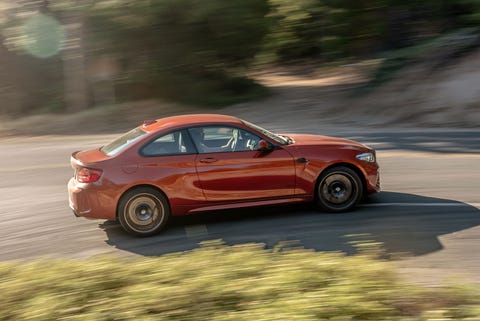
Highs: Monster engine, easy to live with, practical for everyday use.
Lows: Unreliable brakes, are we really still listing “soulless steering” here?
Verdict: The best car in BMW's lineup needs to be a better driving machine.
Even Munich's best car isn't immune to the steering-feel malaise that afflicts modern Bimmers. You get the same steering feedback whether you're driving an M2 Competition in the video-game world of Forza Horizon or in an asphalt reality. As technical editor and resident relationship expert David Beard notes, "When you have no communication, all you're left with is a relationship built on trust."
An unpredictable brake pedal steadily eroded our trust in this particular machine. Hurtling toward tightly kinked corners, we were occasionally surprised by a hard, unresponsive pedal that felt as if the brake lines were filled with wet concrete. That's usually the result of an antilock braking system that believes there's limited available grip, which wasn't the case here. Other times our drivers stood on the BMW's middle pedal and discovered a long and soft travel, likely due to the brake pads being knocked back in the caliper, away from the disc.
Even when the M2 wasn't misbehaving, it couldn't hang with the podium finishers in the mountains. It recorded the longest stop from 70 mph (155 feet) and the lowest lateral grip (1.01 g's) at the track. "Because of its lower limits and zombie-like manners, the Bimmer requires serious commitment in order to drive it fast," says Beard, whose girlfriend of five years might find some solace in knowing that commitment fears also get in the way of his love for speed.
Ironically, this Competition model is as well suited to the daily grind as it is to track use. The open sightlines, ample storage, and surprisingly spacious rear seats aren't new, but that combination is unique among this group. These characteristics make the BMW a compelling option for someone who puts practicality high on their list when shopping for a coupe that clears 60 mph in 4.0 seconds. Does anyone actually do that, though?
3rd Place:
2018 Porsche Cayman
Highs: The experience is even more magnificent than the numbers, prescient automatic transmission.
Lows: Four cylinders for the price of eight, the only car here that could use more power.
Verdict: See? Porsche doesn't win 'em all.
At 3141 pounds, the Cayman is light—not just in this test group or among sports cars, but in comparison with every car on sale in the United States. The lean build allows the Porsche to do more with less. The base 718 runs neck and neck with cars that need more tire, more power, and more fuel to achieve the same end. With such little mass to command, the Cayman stopped from 70 mph in 143 feet, circled the skidpad at 1.06 g's, and ran through the slalom cones at 50.4 mph—among the best runs we've ever seen—all on the skinniest tires in this test.
The numbers aren't the point, of course. The 718 is at its best flitting through sequoias, where the measure of its greatness is the joy it imparts. Pedals and a steering wheel that obey every twitch, dab, and prod will leave you feeling like a natural-born hotshoe. The Cayman's steering shouts a continuous report of the road texture and available grip under the front tires. It also speaks volumes about Porsche's confidence that the steering effort remains unchanged across the drive modes, always delivering the same consistent weight and the same connected feel. Combined with the confidence imparted by the steering, the innate mid-engine poise makes it easy for anyone to exploit the Porsche's capabilities.
We prefer our Porsches with three pedals, but the PDK dual-clutch autobox is talented enough to make us think twice. Set the steering-wheel-mounted dial to Sport Plus and the seven-speed finds the right gear for every corner as if it were reading rally pace notes. The Sport Chrono package's launch control allows for a seemingly infinite number of idiot-proof hole shots with computerized consistency. Paying the $3210 for the PDK is almost like squeezing another 50 horsepower from the engine. Note that the GT350's mill is saddled with just 7.3 pounds for every horsepower to the 718's worst-in-test 10.5:1 ratio, but the Ford beats the Porsche by a mere 0.3 second in the quarter-mile. Straight-line acceleration is the one place where the Cayman's test results are better than the experience. This Porsche deserves an engine as exceptional as the chassis and the price.
2nd Place:
2020 Toyota Supra
Highs: Playful in a way that few sports cars are, Toyota's tuning ensures it's still fun even when you're not driving stupid fast.
Lows: Snug-feeling cockpit, hard to see out of, it-came-from-beneath-the-sea styling.
Verdict: At $57,400, this Toyota is a screaming deal.
The Supra is to the Cayman what the Chevrolet Corvette is to Porsche's 911. Toyota's reborn sports car is an unpretentious overachiever that provides thrills similar to the Cayman's at a five-figure discount, and yet most Porsche buyers won't ever consider it.
The Supra drives like a Mazda Miata rendered one size larger. As in the Miata, there's more body motion than you might expect—certainly more than you experience in the other cars assembled here. But the roll and jostle comprise a form of feedback that's too often engineered out of modern cars. They amplify the sensation of speed and are the chief reasons that the Supra feels so playful, even well below the 1.05 g's of lateral stick it recorded at the test track. Light steering effort feeds into the lively, delicate feel of a car that faithfully abides trail braking and midcorner jabs at the throttle. That said, the Toyota's controls don't have the same neurological connection as the Cayman's. While turn-in is sharp, the steering weight is too flat on-center, creating the sensation of a dead spot that's not really there.
With two fistfuls of torque punching hard from 2000 up to 4500 rpm, the Supra is eager to spin its tires, particularly on corner exit. The stability control is shrewdly calibrated, though. It permits just a skosh of tire slip, keeps the car pointed in the right direction, and still allows the engine to build speed, even in its most vigilant, fully active setting. The ZF eight-speed automatic upshifts with the same satisfying efficiency of the PDK and helped the Supra crack four seconds in the zero-to-60 race. Off-throttle downshifts can be abrupt, though, as the conventional automatic lacks the finessed rev matching of the Cayman's dual-clutch auto.
The Toyota's skin has more warts than a frog—are the fake vents supposed to be cooling the door strikers?—but it often seems as though we're the only ones to see this. People notice, recognize, and gawk at this car the same way they do Lamborghinis. And they don't seem to care that Toyota's icon was largely reanimated by BMW. "They stopped making this when I was eight!" a stoked hitchhiker exclaimed. "I cried!"
We immediately regretted offering the Toyota's passenger's seat to a shirtless, full-grown male stranger. The Supra's cabin is nearly as intimate as a Tokyo train car during rush hour. Obstructed sightlines don't help the crowded feeling, either. On the driver's side, the large mirror and A-pillar block the view through sweeping left-handers. Look to the right and your view is letterboxed by the rearview mirror and the dash-mounted infotainment screen. The rough edges also feed into personality, though. The tight cockpit means you wear the Supra like a batting glove. It provides the sensation that this car is nearly as small, light, and nimble as the Miata but with the song of a straight-six and the right amount of power for a sports car.
1st Place:
2019 Ford Mustang Shelby GT350
Highs: The sound and the fury of an 8250-rpm V-8, race-car-like reflexes, a mountain of grip.
Lows: Always-on intensity, busy ride, attracts police attention everywhere it goes.
Verdict: There's nothing else like it.
With its menacing mug and wannabe-race-car stripes, the Ford looks as if it's breaking laws even when it's parked. Operating under the influence of an 8250-rpm V-8, with a borderline-reckless amount of grip, and disturbing the peace everywhere it goes, this car is almost certainly breaking at least one law if it's in motion.
Hitting 1.08 g's of perfectly balanced grip on the skidpad, the GT350 is as unflappable and as easy to drive fast as the Cayman. The Cup 2 tires also impart right-now reactions to every driver input. The Shelby changes directions with race-car urgency and uncut feedback. The firm brake pedal reacts to the smallest squeeze without ever being grabby. The Michelins even shrink the Mustang's dimensional excess. It is 680 pounds heavier and more than 16 inches longer than the Cayman, yet the Ford beat the Porsche around the skidpad and hounded it through the slalom. While the pricing says the GT350 competes with our assembled group, Beard wondered if we needed a 911 or a Corvette to make for a fairer fight.
Some people might find the Shelby too extreme. The highly bolstered Recaros hug better than a weird aunt, but they're also constricting after a couple hours in the saddle and a burden to climb into and out of. On the wrong road, there's a slightly springy bounce to the ride that'll toss your head, and the brusque demeanor of the Voodoo V-8 cannot be domesticated. If you're nice to them, those pricey track tires will last 10,000 miles. A replacement set runs $1742.

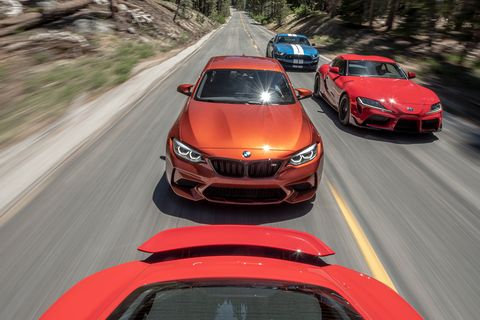
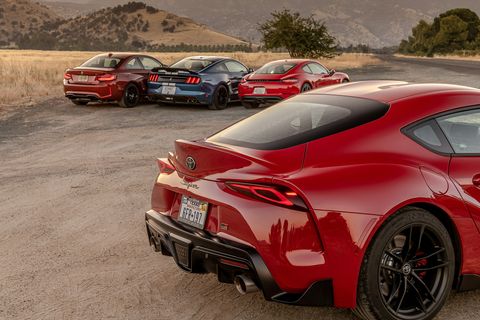
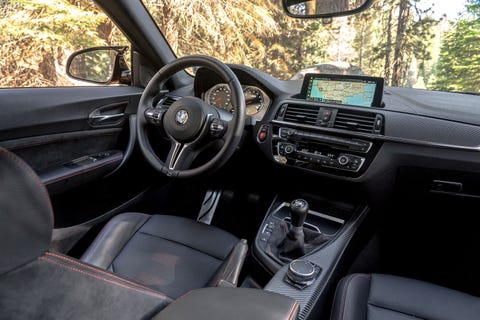
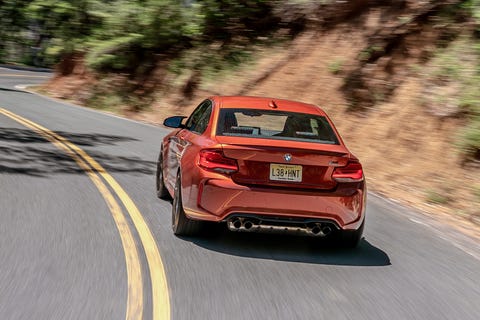
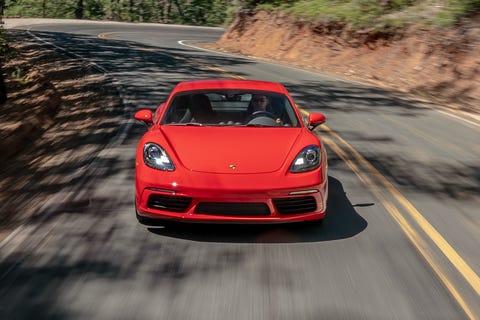
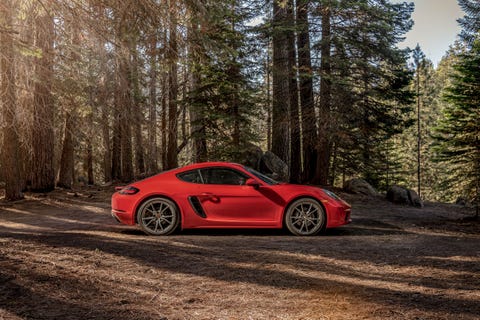
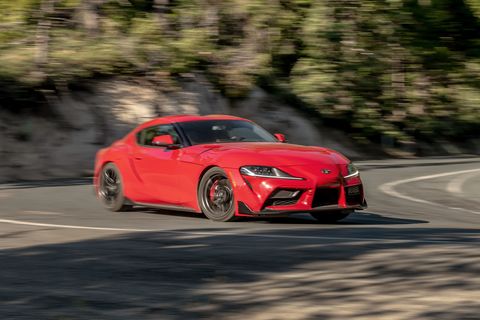

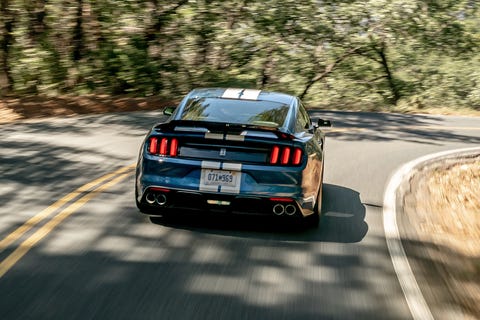
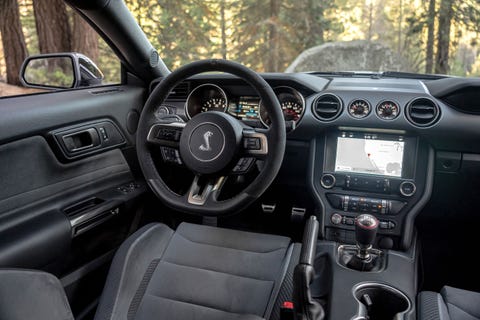

Slots - Live Dealer Games on LuckyClub!
ReplyDeleteWith a wide range of live casino games, we are the #1 provider of video slots in the world. luckyclub This is why we pride ourselves on being the #1 provider of table